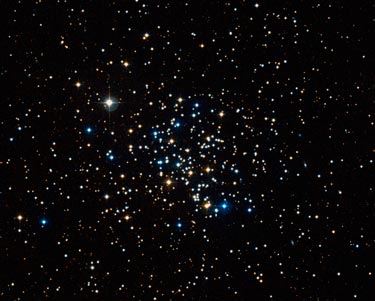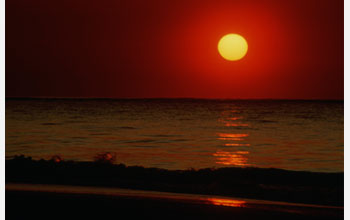搜索结果: 1-15 共查到“天文学 solar cycle”相关记录15条 . 查询时间(0.093 秒)
ON THE SOLAR-CYCLE MODULATION OF THE HOMESTAKE SOLAR NEUTRINO CAPTURE RATE AND THE SHUFFLE TEST
SOLAR-CYCLE MODULATION SHUFFLE TEST
2015/8/20
There exists no signiDcant correlation between the Homestake neutrino data up to run 133 and the
monthly sunspot number, according to a test that is based on certain optimality properties for this ty...
Analysis of Plasma and Field Conditions during Some Intensely Geoeffective Transient Solar/Interplanetary Disturbances of Solar Cycle 23
Earth geomagnetic storm Sun'solar and wind magnetosphere coupling
2010/9/17
The problem of solar wind–magnetosphere coupling is investigated for intense geomagnetic storms (Dst ≤ −100 nT) that occurred during solar cycle 23. For this purpose interplanetary plasma and fi...
I summarize the statistical, physical, and morphological properties of coronal mass ejections (CMEs) of solar cycle 23, as observed by the Solar and Heliospheric Observatory (SOHO) mission. The SOHO d...
Helioseismology and the Solar Cycle: Past, Present and Future
Helioseismology solar activity cycle tachocline farside imaging
2010/9/15
A major goal of helioseismology is to understand the mechanism of the solar cycle. In this paper, some results of helioseismic observations relevant to the cycle are briefly reviewed, the current stat...
Solar Cycle Variation of Interplanetary Coronal Mass Ejection Latitudes
Sun activity coronal mass ejections (CMEs)
2010/9/15
With the use of interplanetary coronal mass ejections (ICMEs) compiled by Richardson and Cane from 1996 to 2007 and the associated coronal mass ejections (CMEs) observed by the Large Angle and Spectro...
Study of High and Low Amplitude Wave Trains of Cosmic Ray Diurnal Variation during Solar Cycle 23
Cosmic rays diurnal variation high amplitude anisotropic events low amplitude anisotropic events solar cycle olar wind speed
2010/9/15
A detailed study has been conducted on the long-term changes in the diurnal variation of cosmic rays in terms of high and low amplitude wave trains event (HAEs/LAEs) during the period 1996–2008 (solar...

Sustained drops in the energy output of the Sun could be more common than modern experience suggests, according to an international team of astronomers that has studied the activity of a number of Sun...

Establishing a key link between the solar cycle and global climate, research led by scientists at the National Science Foundation (NSF)-funded National Center for Atmospheric Research (NCAR) in Boulde...
Energetic neutral atom fluxes from the heliosheath varying with the activity phase of the solar cycle
Energetic neutral atom fluxes solar cycle
2009/5/27
Energetic neutral atoms (ENA's) which are produced in the heliospheric interface can be used to remotely investigate this highly interesting, but poorly known region acting as buffer against the inter...
Analysis of Plasma and Field Conditions during Some Intensely Geoeffective Transient Solar/Interplanetary Disturbances of Solar Cycle 23
Earth:geomagnetic storm Sun:solar and wind magnetosphere coupling
2009/5/7
The problem of solar wind-magnetosphere coupling is investigated for intense geomagnetic storms (Dst γ -100 nT) that occurred during solar cycle 23. For this purpose interplanetary plasma and fie...
I summarize the statistical, physical, and morphological properties of coronal mass ejections (CMEs) of solar cycle 23, as observed by the Solar and Heliospheric Observatory (SOHO) mission. The SOHO ...
Next Generation UV Coronagraph Instrumentation for Solar Cycle-24
Solar instrumentation solar spectroscopy solar corona solar wind coronal mass ejections
2009/5/6
Ultraviolet coronagraph observations of the extended solar
corona (defined here as 1.5 to 10 solar radii from Sun-center) have become a
powerful tool for obtaining detailed empirical descriptions o...
Helioseismology and the Solar Cycle:Past, Present and Future
Helioseismology solar activity cycle tachocline farsideimaging
2009/5/6
A major goal of helioseismology is to understand the
mechanism of the solar cycle. In this paper, some results of helioseismic
observations relevant to the cycle are briefly reviewed, the current st...
Predicting Maximum Sunspot Number in Solar Cycle 24
Sunspot number precursor prediction technique geomagnetic activity index aa
2010/9/15
A few prediction methods have been developed based on the precursor technique which is found to be successful for forecasting the solar activity. Considering the geomagnetic activity aa indices during...


